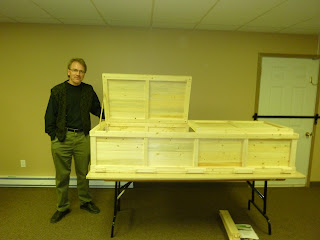It is urgent that we break our addiction to oil. We can, each of us, reduce our use of oil with decisions we make individually, but in order to truly change, we will need policies that will affect the behaviour of everyone. Various policies have been suggested.
Two weeks ago I described a Carbon Tax in this column. Conservatives are very uneasy about such a plan because they fear that as government sees all this new revenue, it is more likely to find new ways of spending it, rather than reducing taxes elsewhere. We saw the Carbon Tax proposal played out in the last Canadian election. Stephane Dion proposed it, and the Conservatives effectively campaigned against it
Last week I described Cap-and-trade. This policy heavily supported by big business, but is unlikely to produce meaningful emission reductions, but will require the creation of a massive regulatory bureaucracy and provide a rent-seeking bonanza for special interests. In place of cap-and-trade, an alternative is proposed: Fee-and-Dividend.
Under this approach, a gradually rising carbon fee would be collected at the mine or port of entry for each fossil fuel (coal, oil and gas). The fee would be uniform, a certain number of dollars per ton of carbon dioxide in the fuel. The public would not directly pay any fee, but the price of goods would rise in proportion to how much carbon-emitting fuel is used in their production.
All of the collected fees would then be distributed to the public. Prudent people would use their dividend wisely, adjusting their lifestyle, choice of vehicle and so on. Those who do better than average in choosing less-polluting goods would receive more in the dividend than they pay in added costs.
For example, when the fee reached $115 per ton of carbon dioxide it would add $1 per gallon to the price of gasoline and 5 to 6 cents per kilowatt-hour to the price of electricity. Given the amount of oil, gas and coal used in the United States in 2007, that carbon fee would yield about $600 billion per year. The resulting dividend for each adult American would be as much as $3,000 per year. As the fee rose, tipping points would be reached at which various carbon-free energies and carbon-saving technologies would become cheaper than fossil fuels plus their fees. As time goes on, fossil fuel use would collapse. . . .
In a fee-and-dividend system, every action to reduce emissions — and to keep reducing emissions — would be rewarded. Indeed, knowing that you were saving money by buying a small car might inspire your neighbour to follow suit. Popular demand for efficient vehicles could drive gas guzzlers off the market. Such snowballing effects could speed us toward a pollution-free world.
Businesses would seek out more opportunities to improve their energy efficiency. Other businesses would sell products and services that enable them to do so. Low-carbon energy sources would be more competitive with high-carbon sources.
If this makes sense to you, let your politicians know how you feel. For more information on this check our web site.
Eric Rempel
